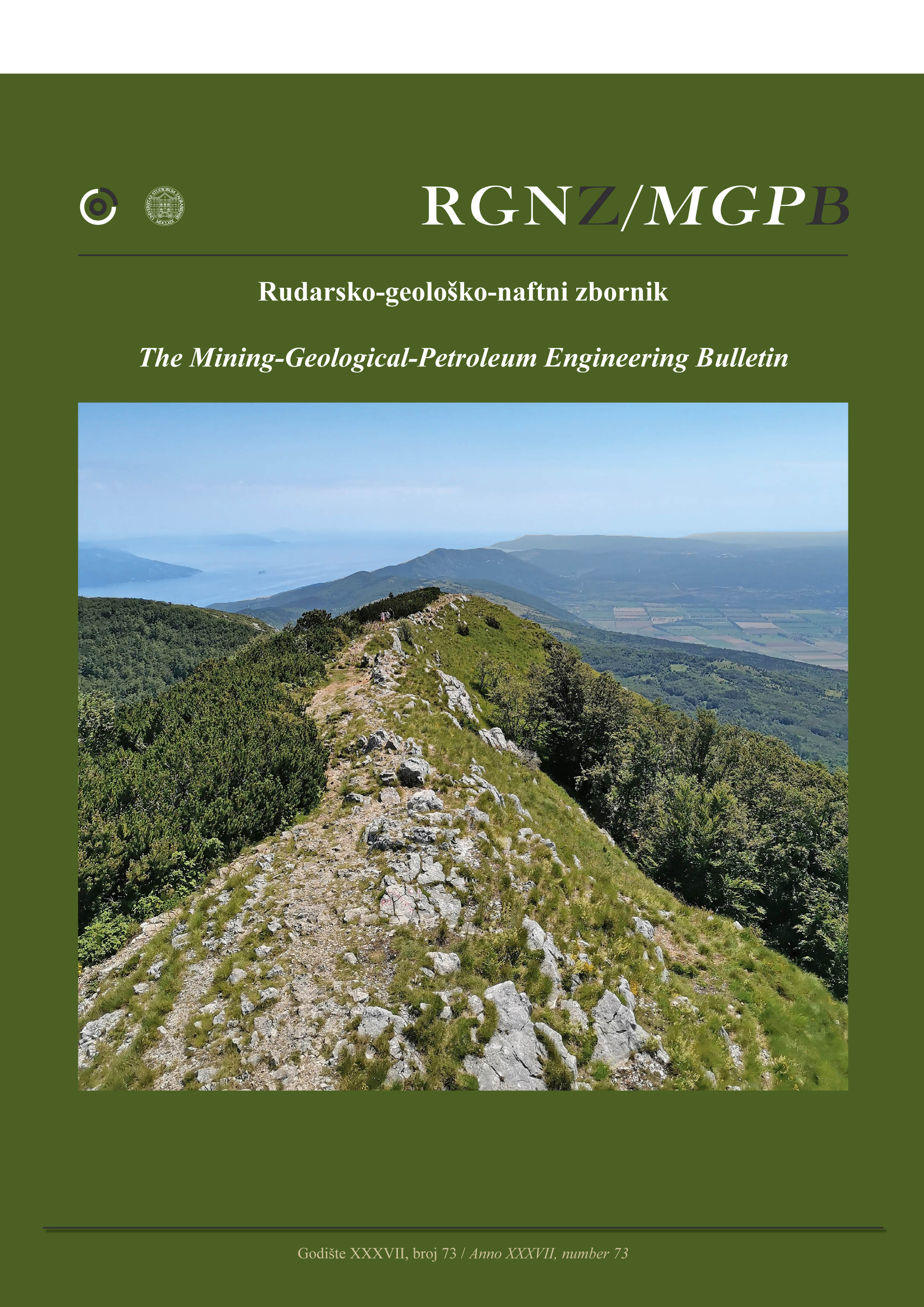Analysis of the impact of different blast energies on rock crushing using numerical modelling
DOI:
https://doi.org/10.17794/rgn.2025.2.7Keywords:
blast wave, shock energy, reflection energy, gas pressure, numeric modelingAbstract
The propagation of waves generated by an explosion induces both tensile and compressive stresses in the rock, impacting its mechanical and dynamic behaviour and ultimately leading to failure. Within this process, the phenomenon of crack expansion is of significant importance and has garnered the attention of various researchers in recent years. Predicting fracture geometry in rock materials, particularly in the context of crack growth, is a complex problem often necessitating advanced techniques. In this study, a blast hole was drilled into a concrete sample, and four explosion modes were examined using the discrete element method. These modes included the simultaneous modelling of shock energy, reflection, and gas pressure; the simultaneous modelling of shock energy and gas pressure; the simultaneous modelling of shock energy and reflection; and the modelling of shock energy alone. While the homogeneity observed in artificial samples like concrete may not precisely mimic that of stone samples, the findings of such research remain valuable within their limitations. The results indicate that the highest joint density, or, in other words, the most substantial rock fragmentation, occurs when all three types of shock energy, reflection, and gas pressure are present simultaneously. Furthermore, the results show that the model incorporating both gas pressure and shock energy exhibits the most significant rock fragmentation, followed by the model considering only shock and reflection energy. Finally, the model modelling shock energy alone demonstrates the least fragmentation.
Downloads
Published
Issue
Section
License
Copyright (c) 2024 Seyed Mohammad Reza Sahlabadi, Kaveh Ahangari, Mosleh Eftekhari

This work is licensed under a Creative Commons Attribution 4.0 International License.
Creative Commons-BY
Authors who publish with this journal agree to the following terms:
In agreeing this form, you certify that:
- You read the ethical codex of the RGN zbornik available at journal web.
- You submitted work is your original work, and has not previously been published and does not include any form of plagiarism.
- You own copyright in the submitted work, and are therefore permitted to assign the licence to publish to RGN zbornik.
- Your submitted work contains no violation of any existing copyright or other third party right or any material of an obscene, libellous or otherwise unlawful nature.
- You have obtained permission for and acknowledged the source of any illustrations, diagrams or other material included in the work of which you are not the copyright owner.
- You have taken due care to ensure the accuracy of the work, and that, to the best of your knowledge, there are no false statements made within it.
- All co-authors of this submitted work are aware of, and in agreement with, the terms of this licence and that the submitted manuscript has been approved by these authors.
Publication licence
You retain copyright in your submitted work, according to journal license policy (CC-BY). By signing this form you agree that RGN zbornik may publish it under the publication licence. In summary the licence allows the following:
Anyone is free:
- To copy, distribute, display, and perform the work.
- To make derivative works.
Under the following conditions:
- The original author must always be given credit.
- The work may not be used for commercial purposes.
- If the work is altered, transformed, or built upon, the resulting work may only be distributed under a licence identical to this one.
Exceptions to the licence
In addition to publishing the work printed under the above licence, RGN zbornik will also enable the work to be visible online.
The journal editorial can change the licence rules anytime but it cannot retroactively restrict author(s) rights.


